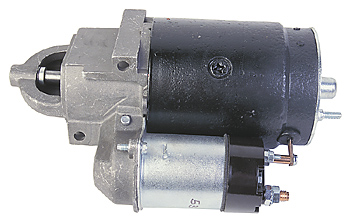How to Replace an Ignition Switch
If your car is having trouble starting and previous attempts at troubleshooting have failed, there is a good chance your ignition switch needs replacing. You’ll need to know how to replace an ignition switch. This can be done at home, though replacing an ignition switch is time-consuming, pain-staking and dirty.
Don’t say I didn’t warn you.
First, let’s see if your car’s ignition switch is the problem. I’ve listed some symptoms your ignition switch is failing below. Any one symptom could point towards other part of the machinery, so check several symptoms, to see if they all point to the ignition switch.
- Your car stalls out and no service lights appear on the dashboard
- When removing your key from the ignition, it feels abnormally warm
- Your speedometer drops down every so often
- Your car dies after you start your it and let up on the key
How to Replace an Ignition Switch Yourself
Although people often pay professional mechanics to replace an ignition switch, you can learn how to replace an ignition switch yourself. Replacing an ignition switch, as stated before, is a complex task – though not an impossible task.
What you will need:
- A new ignition switch
- Multiple size wrenches
- A small and large screwdriver (Look at your new ignition switch to determine exactly how thin the small screwdriver needs to be.)
- Prying bar
- Baking Soda
- Grease
- Safety goggles
- Gloves
Removing Your Old Ignition Switch
-
Disconnect the negative (-) battery cable from the battery. Clean any corrosion around the battery, by using a baking soda and water mixture. Avoid touching the corroded material, since it’s highly acidic and dangerous. (Any clothes which touch the acid will develop holes after a few washes.) After the area is clean, it is safe to disconnect the negative wire.

How to Replace an Ignition Switch
- Unscrew the steering column covers.
- Remove the car’s steering wheel by lifting off the cover, undoing the horn wire and then taking out the retaining nut and washer. Use a large screwdriver and a lot of pressure to remove the retaining nut, if needed. Remove the steering wheel from its shaft. Remove the rubber cover from around the steering wheel shaft. Make a mark on the adaptor so that you remember where to place the steering wheel. Turn the steering shaft so that the word “top” or the arrow is centered.
- Behind the steering wheel, take off the turn signal/windshield wiper poles. Pull them out of their sockets and detach the wiring.
How to take out the old ignition switch:
- Unscrew the stalks around the old ignition switch with your screwdriver. The screws may not be the same size, so remember where you took them from. Remove the plastic spacer around the steering shaft, avoiding any of the three apparent holes. If you don’t, this causes you to have to replace the entire piece. Pry it out gently using a prying bar or a short, thick screwdriver. Sand down the steering shaft before you replace it, to remove any hard dirt. After taking out the spacer collar, remove the head bolt from the left side of the steering shaft. There is one more screw on the back of the switch that needs to be removed and then the ignition switch should slide out easily.
- Disconnect the ignition switch wires, by taking off the wire tabs and pulling them out. In some cars, the wires can be tugged and come loose easily. In others, you’ll have to remove them manually.
- Put your key into the disconnected ignition and turn it to the locked position, which is usually all the way counterclockwise.
- Using your screwdriver, lower the retaining pin. Turn your key into the “off” position in the ignition and this should release the cylinder. To remove the cylinder, turn the key back into the locked position and take out the cylinder.
Installing Your New Ignition Switch
After inserting the cylinder into the new ignition switch, screw in the retaining pin in order to hold the cylinder in place. Be very careful to ensure that the ignition switch and cylinder line up exactly. You may want to grease the area of the ignition switch that attaches to the lock as this is the place of the ignition switch that gets the most use
- Reattach the ignition switch to the ignition wires on the right side of the steering wheel shaft. Slide the new ignition switch into place. Reinsert the mounting screws. Be careful to ensure that the ignition switch is held tightly in place.
- Grease the spacer collar before reattaching it. Using a wrench, tap the spacer evenly until it falls into place.
- Reattach the windshield wiper and turn signal switches to their wires and slide them back into place. If necessary, trim the switches at this time. Reconnect the steering wheel to its wires and, using the mark that you made on the adaptor, reinsert it into the steering shaft.
- Reconnect the negative battery cable and start your new ignition to ensure proper installation.
As you can see, learning how to replace an ignition switch is a somewhat dirty and complex process. If you are brand new to car maintenance, it is best to have the assistance of an expert. Each make and model of car has its own unique features, so keep in mind that some models may not follow this procedure exactly.
